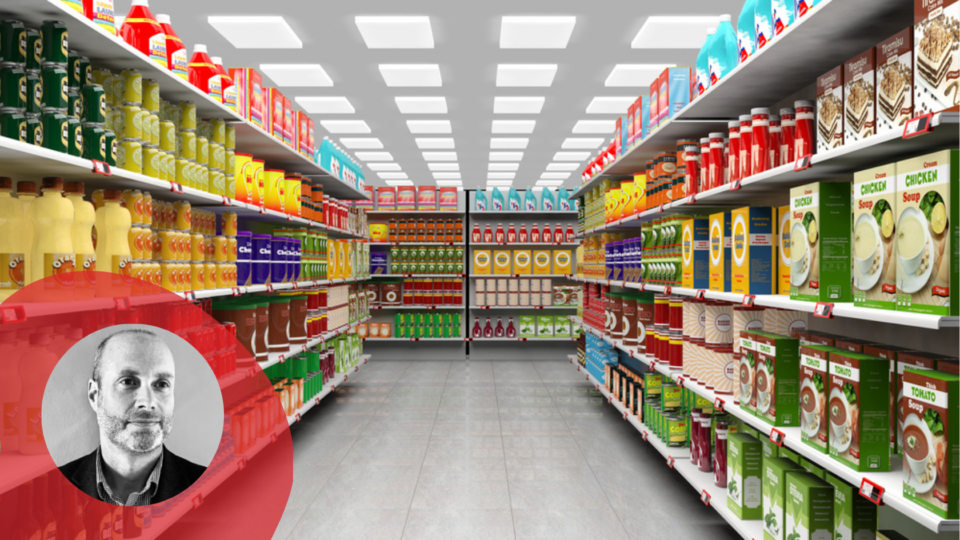As consumers look to save money on takeaways and eating out, grocery retailers can be the quiet winners during an economic downturn. We saw this at the start of the pandemic when food store sales shot up by 21%. Despite dining out becoming an unrestricted option once again, 71% of people in the U.S. still plan to cook more at home. The pandemic trend of following food influencers on Instagram and TikTok and re-creating their recipes hasn’t waned and continues to drive consumer grocery purchasing habits.
While this may sound positive for supermarkets, it also brings new challenges. First, supermarkets must determine exactly how much inventory to order so as not to waste food or purchase insufficient supplies. The challenge with ordering too much food is that shipping is expensive and often unreliable with supply chain troubles, and warehouse space is a very limited resource. Bountifully shelved stores sound like a luxury but can result in more wasted produce and significant revenue loss.
Food retailers must also have the right financial planning in place to withstand the economic turbulence in the long run and make sure they remain agile regardless of wider market trends. For instance, many restaurants might try and compete with traditional grocery shopping by adopting delivery services in order to appeal to consumers who lack the time, space or inclination to cook.
With the right financial planning in place, here are some scenarios grocery outlets could consider to remain competitive:
1. Transform shopping in-store.
Local supermarkets must find ways to compete with the likes of Amazon Fresh stores and modernize the in-store shopping experience. Though many can’t afford to develop a completely autonomous shopping experience, cashless checkouts have made it easier and more convenient for those one-item shoppers to run in and out.
Hyper-personalization is also on the rise. Grocers that convince customers to become loyalty card holders, for example, will achieve levels of customer retention that restaurants don’t often see. With that loyalty card, customers can find personalized offers in-store that ease and enhance the shopping experience.
Innovating the in-store experience can give stores a great return on investment. Supermarket coffee bars, for example, are known to generate a more relaxed shopping environment. And all retailers know the value of those last-minute purchases that rely entirely on customers being tempted at the end of aisles.
Though food stores are tied to their stock and warehouse space, there is a lot they can do within the store to entice customers to come back again and again. For example, beyond the traditional trick of placing fresh-baked bread at the front of a store, the layout of a retail space can be arranged in tune with the dietary and food trends of the moment.
2. Use, but don’t depend on, ecommerce.
While enriching the in-store experience is key, retailers must also evolve with the times. Ecommerce in the food industry became a necessity for many during the pandemic, and it’s continuing to prove effective. An estimated one in three continue to shop online for their groceries and goods.
This means that grocers must follow many other retailers and develop their own delivery systems, or partner with delivery platforms like Instacart or Getir. Not only can these external services provide some bonus marketing opportunities, but they also position a brand as a modern retailer with its finger on the pulse of the consumer experience.
Additionally, some products and promotions that might not be available in-store can attract online bargain buyers. Ecommerce allows stores a flexibility and adaptability that didn’t previously exist for the original brick-and-mortar industry.
3. Plan and mitigate all scenarios.
The most important thing supermarkets can do to remain competitive in today’s food retail landscape is to become agile enough to flex to any number of different scenarios. Stores need a system to manage this now more than ever — an integrated process that allows for warehouse-to-store-floor control. Tech giants like Amazon have an immediate advantage in an economic downturn because of their spread across industries and platforms.
However, local supermarkets have the advantage of loyalty and a strong customer base. If they modernize accordingly and make the in-store and online shopping experiences optimized for their customers, they will likely take the challenges of 2023 in stride.
Matt Hopkins is Global Retail Director at Board. He is a forward-thinking retail technology executive with a successful track record in formulating and delivering business-aligned solution strategies that drive value for clients in the retail and consumer product industry. With 20+ years in several senior leadership positions, Hopkins’ contribution to retail solutions strategy accelerates customer value and the go-to-market performance for established and startup technology providers. For the past eight years, he has specialized in AI strategy for merchandising and supply chain, studying AI at MIT.




